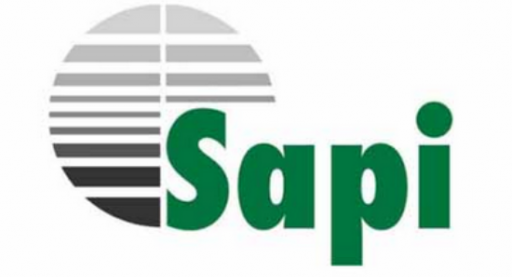
Certified quality

ISO 14001 is an international and voluntary standard that any type of public and private organization can implement. This certification sets out the criteria for an environmental management system, such as sustainable development, environmental compatibility, pollution prevention and improved environmental performance. It can provide assurance to the company management, as well as the shareholders involved, that the environmental impact of the company’s activities are being evaluated, measured and improved. ISO 14001 makes for an objective and measurable tool, as well as the tool of choice in strategic business management to integrate environmental issues, attainable with reasonable financial and organizational effort. Acquiring an environmental management system positively influences corporate image and the brand perception by its customers, therefore having a positive impact on consumer purchase behavior.
A certified environmental management system:
- ensures the management and the maintenance of legal compliance and the monitoring of environmental performance.
- ensures a reduction in waste, water and energy consumption.
- provides effective advantage in the investment & technology decision-making process.
- ensures the preservation of business assets and transparency in mergers and acquisitions (risk assessment and management).
- provides a systematic approach for effective management of environmental issue.
- improves the organization’s relationship with the government authorities through credible, effective communication.
- improves the company’s corporate image.
Nordic Swan is the sustainability ecolabel developed by the Nordic countries (Denmark, Finland, Iceland, Norway and Sweden). As one of the toughest environmental certifications, to be granted the Nordic Swan ecolabel, complex and rigid environmental requirements must be fulfilled, applying to high quality standards, as well as to environmental performance throughout the product life cycle. By complying with the current environmental law, we ensure sustainable production is achieved, as well as a low environmental impact throughout the entire life cycle of our products (LCA – Life Cycle Assessment).
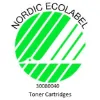
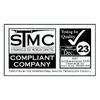
STMC stands for Standardized Test Methods Committee, a global agency enacted to develop and promote stringent standardized test methods to evaluate toner printer cartridge performance. Standardized methods are designed to make it possible to evaluate a cartridge anywhere and obtain the same results, regardless of who carries out the test.
The norm UNI ISO 45001:2018 identifies the international standard for workers healthand safety management system. The norm was issued by the ISO in 2018, in this way a standard could be available for which a certificate of conformity could be issued. The certification attests the voluntary application, within an organization, of a system that allows to guarantee an adequate control regarding the safety and health of workers, in addition to compliance with mandatory regulations. The management system, regulated by UNI ISO 45100, can be integrated with the environmental management system, inspired by the norm UNI EN ISO 14001:2015. Safety and the environment are in fact closely connected to each other. Furthermore, the workplace safety management system can usually be integrated with the UNI EN ISO 9001:2015 quality management system.
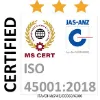

ISO 9001 defines the requirements for a quality management system (QMS) within an organization. The criteria outlined by this standard are generic and can be implemented by any type of organization (the latest version of ISO 9001 is ISO 9001:2015, updated in September 2015). ISO 9001 is a process-based standard providing a framework for the setting of quality objectives applicable in production, starting from the definition of customer requirements, whether explicitly stated or not, to the monitoring and measuring of the entire production processes. The principles contained in the ISO 9001 standard strongly focus on the customer through the effective application and monitoring of activities and processes aimed to determine and enhance maximum satisfaction for the end user. The ISO 9001 implementation process identifies the procedures and registration requirements for each process and macro-process within the organization. The implementation of QMS requirements applies to all areas of the business, such as: business management, planning, marketing, design, sales, supply, production, placement, after-sale assistance and support. ISO 9001 requirements also identify and address risks and opportunities within the quality managementsystem that can be achieved by defining the company’s mission and vision, through its quality policy. The aspects related to resource management – including human resources, infrastructure and work management – are also covered to implement and improve the quality system management processes, as well as address customer satisfaction.
First launched in Sweden but internationally recognized, the Environmental Product Declaration (EPD) System is a global voluntary program within the framework of product-oriented common environmental policies at the European Union level (see Integrated Product Policy – IPP). Based on the relevant UNI ISO 14025:2006 Standard (with UNI standing for Italian National Unification) where it is referred to as ‘type III environmental declaration’, an EPD is an independently verified and registered document that communicates objective, transparent, comparable and believable information about the life cycle environmental impact of products and services. The environmental performance of a product or a service contained in an EPD is produced on the basis of Life Cycle Assessment (LCA) practice and calculations according to the ISO 14040 series of standards, addressing standardized assessment methodology to ensure that the information developed in a LCA is transparent and available to all. The information carried in an EPD is purely indicative, as neither assessment nor preferability criteria nor the minimum performance levels to be respected are indicated. According to MSR 1999:2 ‘Requirements for Environmental Product Declarations, EPD – an application of ISO/TR 14025 Type III Environmental Declarations’ published by the Swedish Environmental Management Council:
- an EPD is open for all types of products or services from any company, regardless of their use and position in the productive chain;
- an EPD provides a basis for comparison of products and services belonging to the same group;
- an EPD is independently verified by a third-party organization to assure the credibility and reliability of the LCA results and conclusions

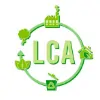
The environment sits at the heart of everything we do. Our business complies with current environmental regulations and our products have a low environmental impact throughout their entire life cycle (LCA).
In order to evaluate the actual environmental benefits of remanufacturing, a comparative study was carried out by LCA-lab (a company spun off from ENEA) in collaboration with the University of Modena and Reggio Emilia, to measure the environmental impacts of Sapi remanufactured cartridges against an original manufacturer cartridge. The global environmental impact-level indicator of Sapi cartridges measures -84% compared to original cartridges.
